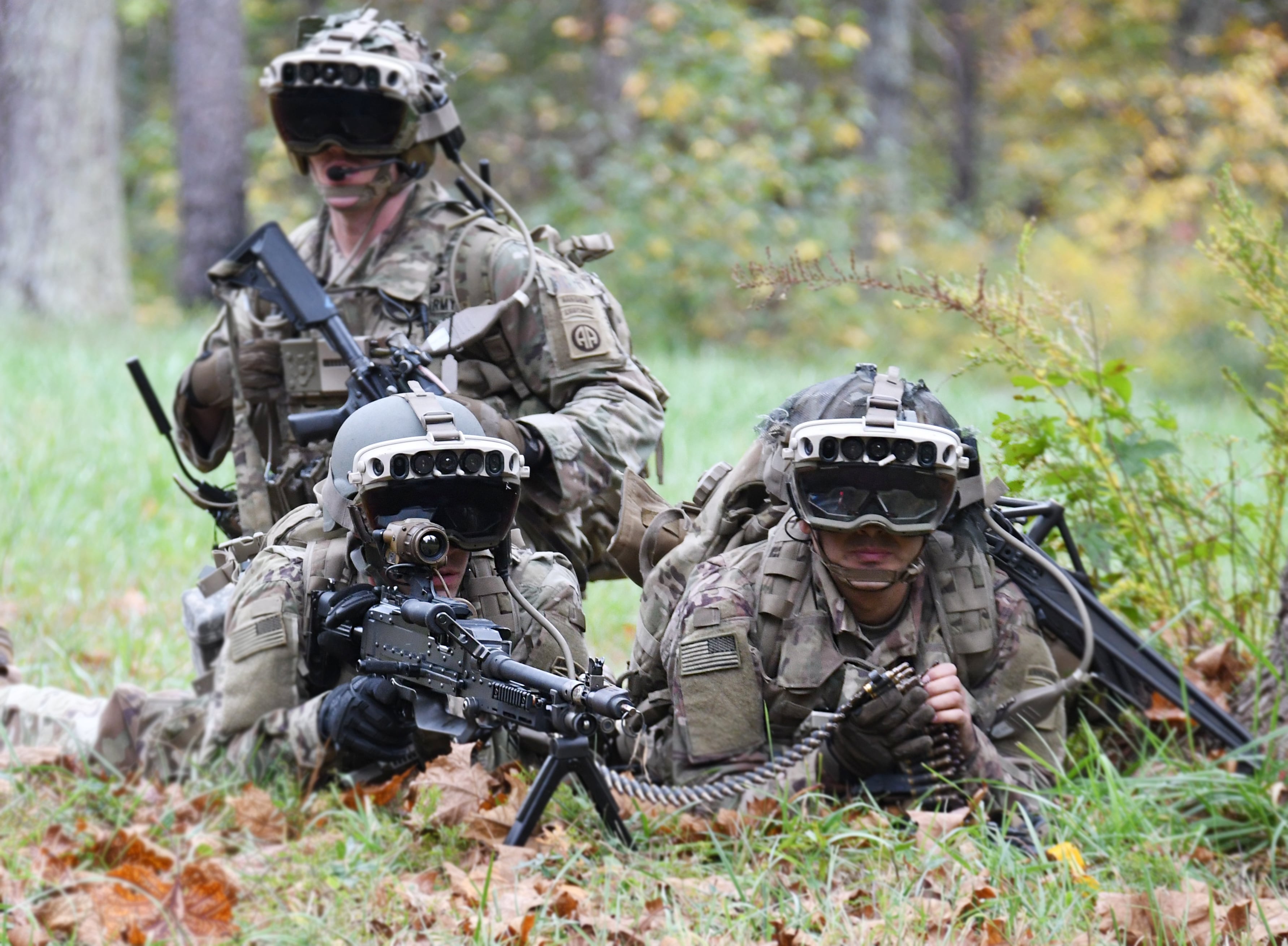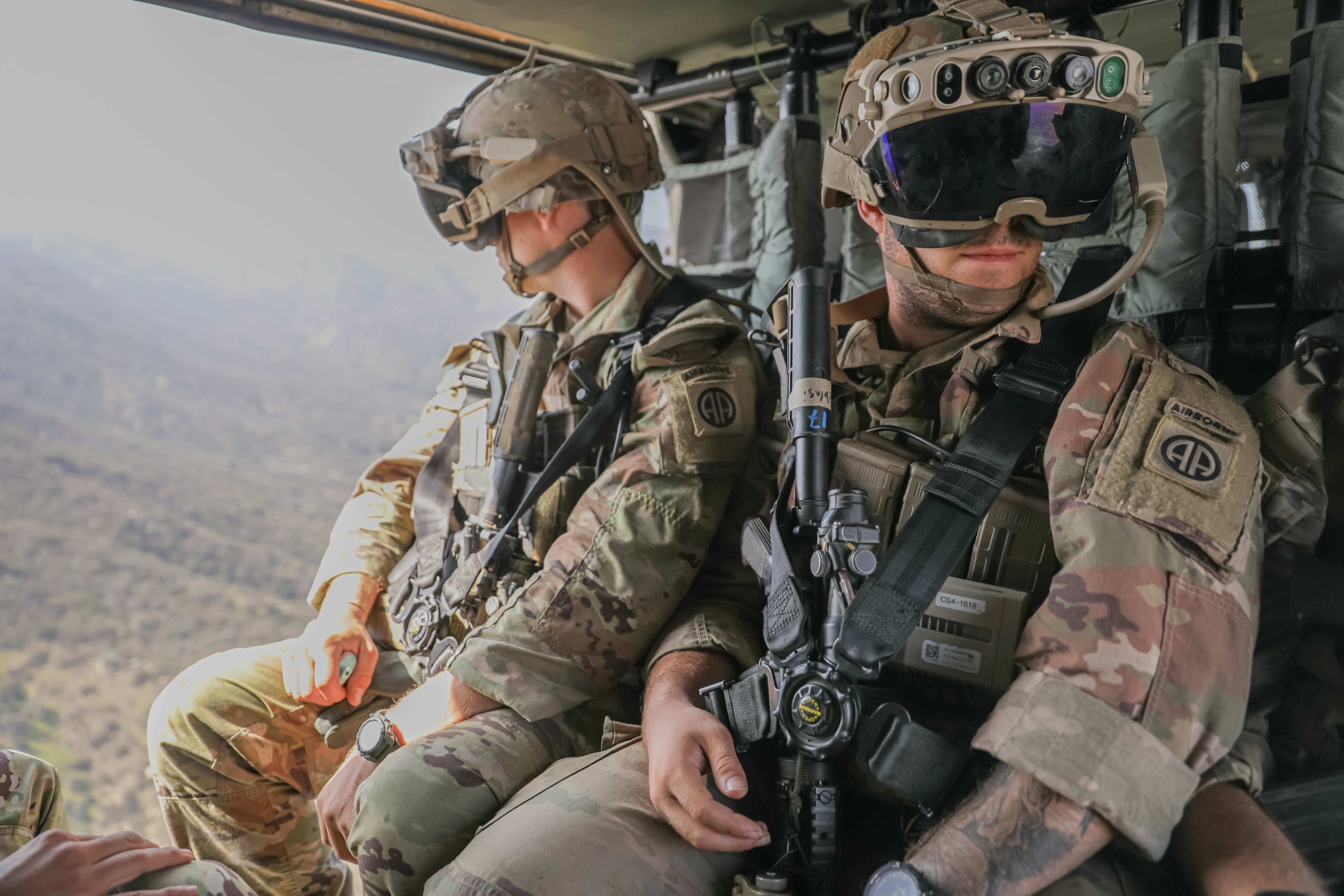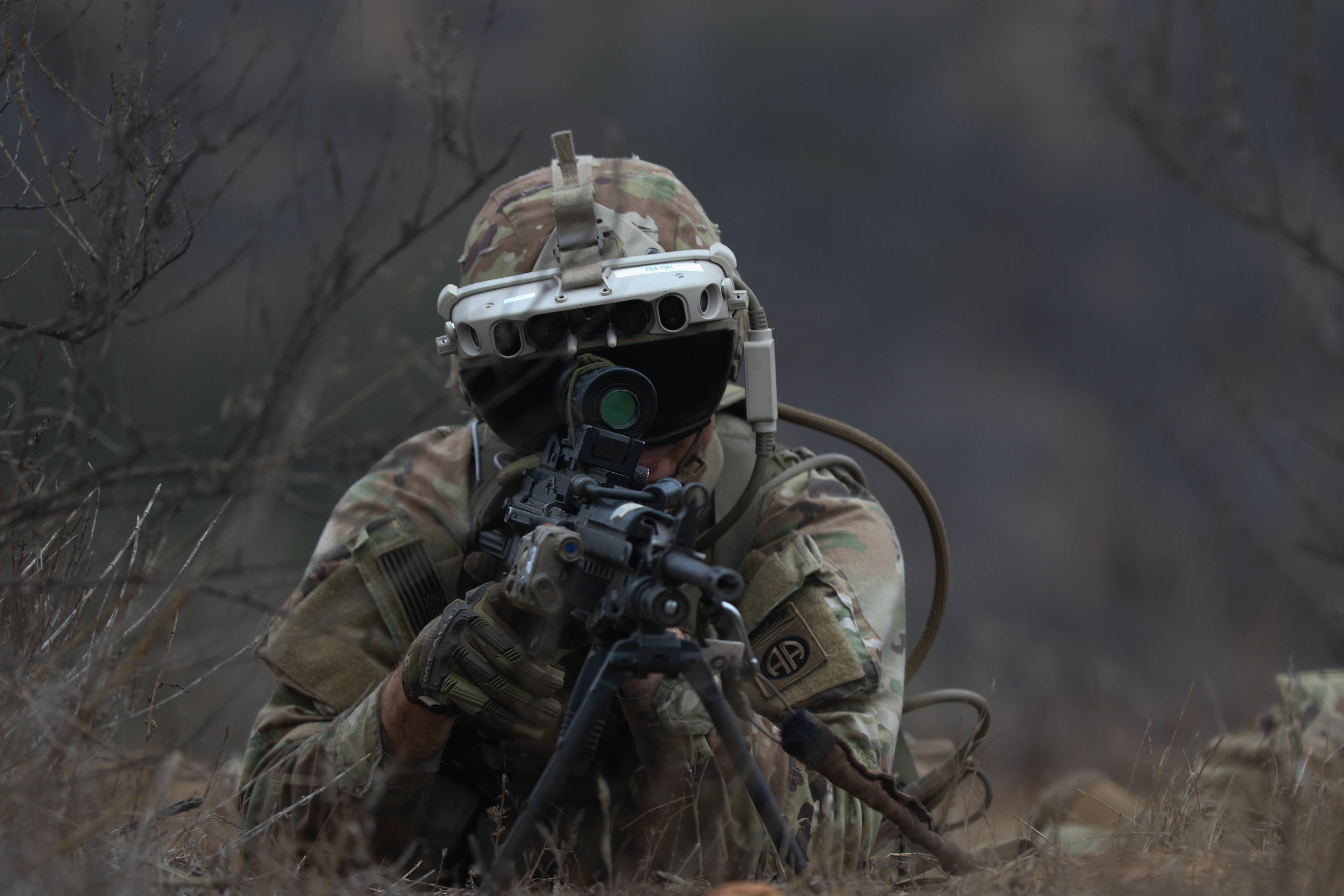The Army is moving ahead with an advanced variant of its mixed reality goggle aimed at transforming situational awareness and more for the dismounted soldier.
The service announced today that it had awarded a “task order” to Microsoft to develop the 1.2 variant of the Integrated Visual Augmentation System. The goggle is based on the Microsoft HoloLens.
Earlier versions of the augmented reality device, in development since 2018, will begin fielding to both operational and training units this year. Those are the 1.0 and 1.1 variants, as Army Times previously reported. The specific units to receive those devices have not yet been publicly identified by the Army.
The “do-it-all” goggle brings the situational awareness and systems approach more traditionally available only to platforms, such as fighter pilots or tank crew commanders, but for the individual dismounted soldier networked with a squad and larger units.
And the device has been tested in combination with existing platforms such as Army helicopters and ground vehicles, allowing soldiers to communicate with the crews and virtually “see” outside of the platform and pass data among their unit and the vehicle’s crew.
RELATED

The Army is receiving 10,000 units total, half of the 1.0 and half of the 1.1. That incremental fielding will begin in September, according to Program Executive Office-Soldier spokesman David Patterson. Previous budget details covered an initial purchase of a total of 40,000 units.
“To date, the Army has conducted over 30 Soldier test events and more than 100 technical sub-tests with more than 1,000 Soldiers contributing nearly 100,000 hours of user feedback for IVAS,” according to an Army release. “These tests validated the system’s continued progress while providing areas for focused improvements.”
In a separate release Tuesday, officials noted that “thousands of IVAS systems are on ground in [Rock Island, Ill. – Joint Manufacturing and Technology Center’s], in preparation for fielding. The Army anticipates procuring up to 121,500 units for close-combat forces over the coming years.”

The IVAS 1.0 version provides baseline capabilities, which include navigation and rapid target acquisition with weapons sight camera linkage.
The 1.1 version adds an improved low-light sensor, and the 1.2 version will use a new form factor and reduce the profile of the heads-up display and distribute counterweight on the helmet-mounted device for better use and comfort, according to the release.
Army Times previously reported further details of the version differences, such as a cable in versions 1.0 and 1.1 runs down the front of the user and connects to batteries will be moved to the rear of the helmet off the user’s chest and shoulder. The 1.2 version will also be slimmer and lighter.
The entire IVAS 1.0 system, excluding the radio, is about 3.4 pounds. Of that, 2.4 pounds is on the soldier’s head.
For version 1.2, developers seek to cut the total weight to 2.85 pounds or less, the same or better than the Enhanced Night Vision Goggle-Binocular, officials said.
The enhanced goggle is an advanced night vision goggle fielded in limited quantities to close combat forces in recent years that has shown vast improvement in night vision quality and improved marksmanship with its rapid target acquisition technology. The target acquisition tech was also developed at PEO Soldier and Night Vision Labs, both at Fort Belvoir, Va.
The incremental fielding is an approach that officials say will allow the service to push cutting-edge technology, and new structural designs while allowing soldiers to use the early versions as the Army advances the gear with new features and capabilities.
That cutting-edge tech has proved somewhat challenging. In an exclusive interview with Army Times in October, PEO Soldier commander Brig. Gen. Christopher Schneider said that the analog night vision the organization developed over nearly 70 years is reaching its technological limits.
New ways of fusing data with the night vision picture and applying advanced computing capabilities needed to process and deliver information to the user are necessary, he said.

That work did cause some delays for earlier-scheduled releases of the equipment in a program that is estimated to cost an anticipated $22 billion over the long term.
The delays triggered a Department of Defense Inspector General audit of the IVAS program in 2022 that directed officials to seek more soldier input.
Exact fielding dates for the 1.2 version have not yet been announced, though officials have planned for fiscal year 2025.
Delivery orders for IVAS 1.2 production systems will be placed after IVAS 1.2 qualification and operational testing, according to the release.
Todd South has written about crime, courts, government and the military for multiple publications since 2004 and was named a 2014 Pulitzer finalist for a co-written project on witness intimidation. Todd is a Marine veteran of the Iraq War.





